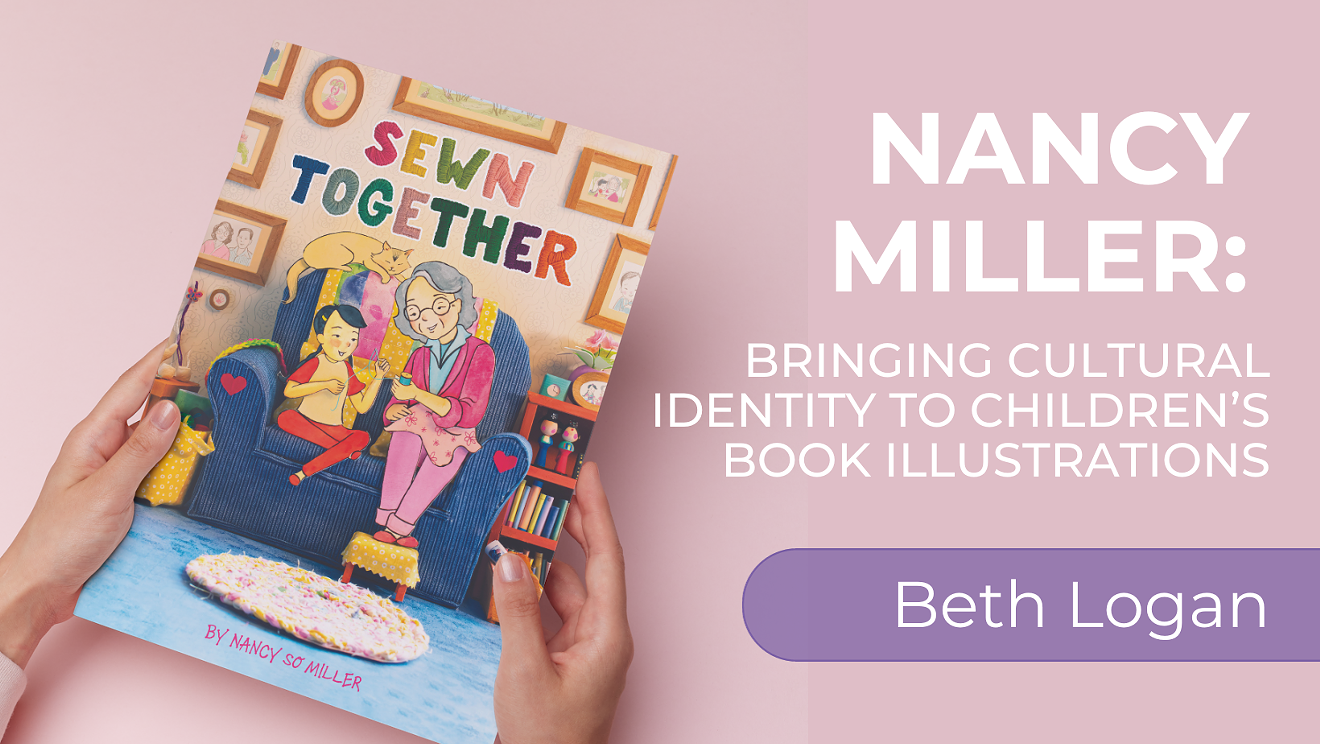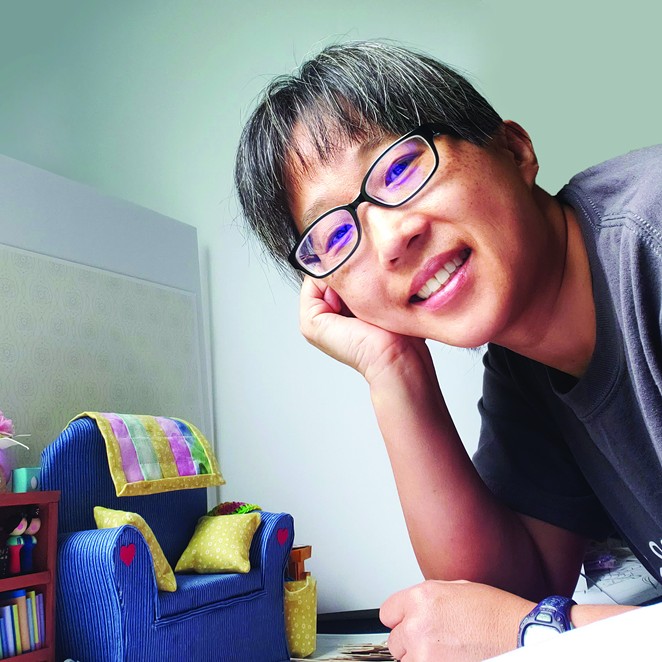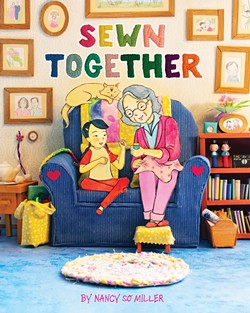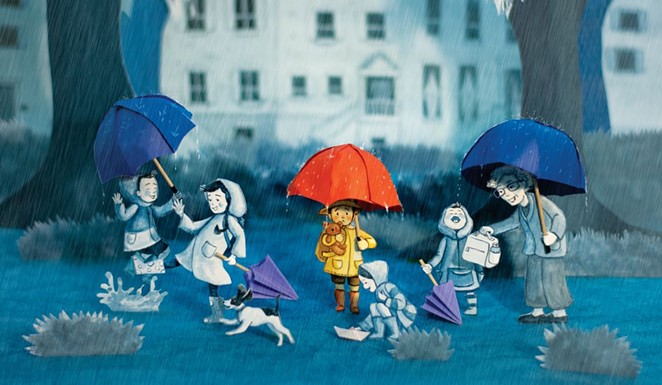Petite and vivacious, South Korean-born Nancy Miller has vivid memories of starting kindergarten in Boise, Idaho, of not being able to speak any English, and of being teased about her Korean name. “I had this little boy behind me who would pull my ponytail, and it just irritated me, but I didn’t know how to communicate that to the teacher, so I bit him. I got into a lot of trouble for that!” As a four-year-old, her parents had emigrated to the United States to accept engineering jobs with Hewlett Packard, and in her community “there were no other Korean families. It was very homogeneous and we kind of stuck out and didn’t fit in.”
“And of course,” she continues, “what you learned about was all very centric to the United States. I feel sometimes that I missed out on a whole different history and culture that I’m trying to rediscover now as an adult. That feeling got stronger as I became an art teacher. Even in Georgia, many of the children hadn’t met an Asian person before.” These experiences led her to examine racial diversity in children’s books as her thesis subject in graduate school, “especially in books influenced by the illustrators’ personal identities. I started to want to put more of myself into my books.”
Miller first came to Savannah in 1994 to attend the Savannah College of Art and Design (SCAD) for her undergraduate degree in illustration. “I always really loved drawing. When I didn’t speak any English, I passed my time with drawing." She fell into a graphic design career after graduation, starting “as a lowly production assistant at the Savannah Pennysaver, then went to the classified ad department of the Savannah Morning News and then to Scuba Diving Magazine.” During her tenure at the magazine, she attended Armstrong to attain a teacher’s certification and has been teaching art for the past thirteen years. Currently, she teaches grades K through 8, and notices increased diversity in the classroom with children of different social and ethnic backgrounds. Always remembering how excluded and different she felt as a school child, she strives to introduce her students to diverse, contemporary artists as much as possible.
Knowing that she wanted to focus on illustrating children’s books, Miller earned her MFA in illustration from SCAD in 2022. During her studies, she took an influential book illustration course from professor Brian Bowes who encouraged her to write her own stories, and she had an internship with award-winning illustrator and author R. Gregory Christie. “He’s won a Caldecott and several Coretta Scott King awards," she tells me enthusiastically. Christie helped her develop both business skills and visual storytelling skills, and “now he’s become a mentor.” She also took courses from the Storyteller Academy to learn how to write, revise, and understand the structure of a good children’s book story, and that experience has connected her to a critique group made up of other authors.
Miller continues, “I knew I wanted the visual component of my graduate thesis to be based on the experience of teaching my son how to make Korean gimbap when he was in the first grade. I titled it "Gimbap Kitchen," [Gimbap is a Korean dish made from cooked rice, vegetables, fish, and meat rolled in gim - rolled sheets of seaweed - and served in bite-size pieces that resemble Japanese sushi] and it has gone through numerous revisions with the help of my fantastic critique group.”
“There’s something magical about reading an amazing story. I knew I wanted to do that! And I got lucky, the year before I graduated, a literary agent discovered my artwork online and signed me.” Still awaiting publication of the Korean gimbap story, she has learned not to take rejection to heart, and has since written and illustrated three more books, with one of them currently out on submission to publishers. One book, entitled "Sewn Together," is about an imagined loving relationship with her Korean grandmother, whom, unfortunately, she never met again after emigrating to this country.
It’s important to Miller to reference her Korean American culture. Her son is now 17 and she recalls her disappointment in not being able to find ethnically diverse books for him as a young child, and how in guiding her elementary art students through self-portraiture lessons, they would initially want their portraits to look like everyone else’s. “I’d tell them, ‘Your skin color is unique. Look at my skin color!’ So, to be able to see yourself in a book is very powerful. You want to fit in, but it’s hard if you don’t see yourself represented.”
Miller shows me several “book dummies” – scaled-down versions of her finished books that can be reviewed before full-sized digital PDFs are sent to potential editors and publishers. “One of the best things I’ve done is to read the book dummy to school children first” and assess how well they respond and react to the page-turns and to the story. But long before dummies are made, Miller builds and photographs miniature worlds or dioramas. For "Sewn Together," she painstakingly created a tiny living room with real bookshelves, an armchair upholstered in blue corduroy, and other furnishings covered in custom fabric she designed and printed herself.
Miller next places her story’s characters in the little 3D-world she has created. She seems more of a craftsperson/maker than a digital creator in many ways: “It’s just like when you’re a little kid and you make paper dolls,” she explains. “I wire 2D-people to make them stand up and then Photoshop the wires out afterwards.” She says that “this insanely lengthy process” gives her illustrations more depth and realism than can be achieved by simply painting or drawing a picture. She employs the camera’s depth-of-field to make the background slightly fuzzy, so that the viewer’s eye is focused on the objects and characters she places in the front of each diorama. “One of the most rewarding aspects is when I click the shutter, and it’s what I envisioned.”
Besides hoping for the publication of projects already completed, Miller’s future includes creating a longer novel with fewer illustrations, collaborating with another writer friend on illustrating her story, and a graphic novel. She is currently writing and researching a non-fiction book on the Korean American musician, composer, and performance artist Nam June Paik, who is known as “the father of video art.” The target age group for this book is 5 through 9. She visited the Smithsonian this summer and is starting the process of acquiring rights to use images and access his letters of correspondence.
Miller concludes, “I’m hopeful that there will continue to be representation within children’s books for a variety of kids. Not just for kids to read about their own culture, but for other kids who may not identify with that culture to be able to see it and appreciate it. I get such a wonderful response from children when I read my books to them. And that’s what keeps me going.”
Find out more about Nancy Miller at nmillerillustration.com and @nmillerillustration and listen to her “My Creative Life” podcast at anchor.fm/nmillerillustration in which she interviews other authors, illustrators, and artists.





























